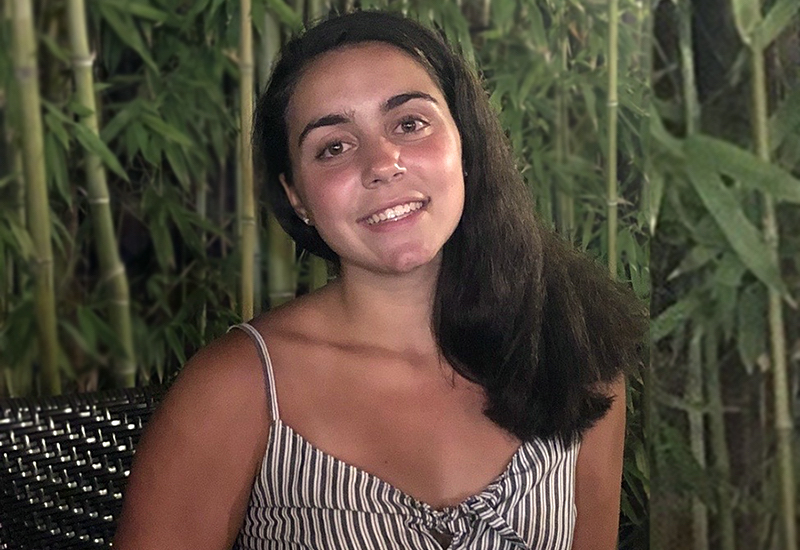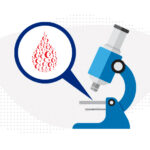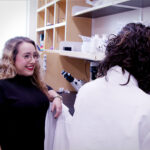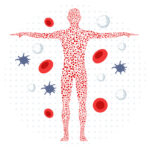How a broken leg and a transatlantic flight led to a deep vein thrombosis

Pain was 16-year-old Katerina Dalmanieras’s first warning sign when she returned from a family vacation in August. The high school junior, who fractured her fibula a month earlier, was in a leg brace and on crutches, so she had not moved during the seven-hour transatlantic flight.
“When I got home from the airport, my leg hurt no matter what position I was in,” she says.
Assuming the discomfort stemmed from the fracture, Katerina tried to ignore it. As a competitive rower, she’s accustomed to working through pain, but it became almost unbearable.
In her orthopedist’s office a few days later, Katerina voiced her concerns.
“I told the doctor I had been in an excruciating amount of pain, so he examined my leg and couldn’t feel anything, so he said that it was probably just soreness, to keep resting it and it should get better.”
That was a Monday afternoon. By Thursday evening, she was still in pain. Her mom, Amy, called her daughter’s primary care doctor, who advised them to go to urgent care.
“They were concerned it might be a blood clot, which could end up in my lungs,” says Katerina. “So, they wanted me to be seen right away.”
Diagnosis: Deep vein thrombosis
At urgent care, an ultrasound confirmed Katerina had a deep vein thrombosis (DVT), a condition in which a blood clot develops in a deep vein, usually, as in Katerina’s case, in the legs. If the clot breaks loose, it can block blood flow to the lungs and develop into a blockage in one of the pulmonary arteries, known as a pulmonary embolism (PE). Approximately 20 to 30 percent of people with a DVT will develop a PE.
“This is a very serious situation,” says Julie Duzan, the Thrombosis and Anticoagulation Program nurse at the Dana-Farber/Boston Children’s Cancer and Blood Disorders Center. “And when a blood clot forms, there is a high risk of that blood clot getting bigger or moving, which can then be fatal.”
The urgent care staff wasn’t accustomed to treating kids with blood clots, so they consulted with a Boston Children’s hematologist. Katerina was seen the very next day.

‘The perfect DVT storm’
Both Julie, the Thrombosis and Anticoagulation Program nurse, and Dr. Alan Michelson, the program director, examined Katerina.
“She had four risk factors,” says Julie. “One was her fracture. Two was her reduced mobility. Three, she was on a transatlantic flight. And four, she was dehydrated. It was the perfect deep vein thrombosis storm.”
Take steps to prevent blood clots.
1. Stay active and physically fit: a sedentary lifestyle and obesity increase your risk of clots.
2. Keep moving, even during long travel: make pit stops with long car rides and walk the cabin ofthe airplane. If you must sit, frequently flex your calves and ankles to keep the blood flowing.
3. Stay hydrated, particularly with long travel.
4. No smoking.
5. Talk to your doctors before surgery, during hospitalizations, or when starting on medications regarding your risk for blood clots.
To treat her condition, Katerina was started on a blood thinner — twice daily injections for three months — a standard course of care. In November, the Thrombosis and Anticoagulation Program team will follow-up with another ultrasound to re-examine the clot.
“I feel so much better,” says Katerina. “The medication has helped so much, and I haven’t had any pain for a while, which is a relief.”
Although Katerina will make a full recovery, Julie says her DVT is now part of her medical history. “Having a clot puts you at risk for future clots,” says Julie. “So, it’s important to know the signs of DVT and what you can do to lower your risk.”
Learn more about the Thrombosis and Anticoagulation Program.
Related Posts :
-

Blood donations help Kit manage Diamond-Blackfan anemia — so she can dance, sing, and enjoy life
Every month, Kit Murdoch needs a blood transfusion to stay alive. The 2-year-old has Diamond-Blackfan anemia, a rare ...
-

Sickle cell gene therapy and boosting fetal hemoglobin: A 75-year history
Ed. Note: This post updates an earlier post from 2018. In a landmark decision today, the Food and Drug Administration (FDA) ...
-

The clot thickens: Kellie Machlus, PhD
Part of an ongoing series profiling researchers at Boston Children’s Hospital. Platelets are the bandages of our blood, forming ...
-

Could we make blood anywhere in the body?
Our bodies make blood in a specialized niche — a “nursery” within our bone marrow that nurtures blood stem cells so ...





